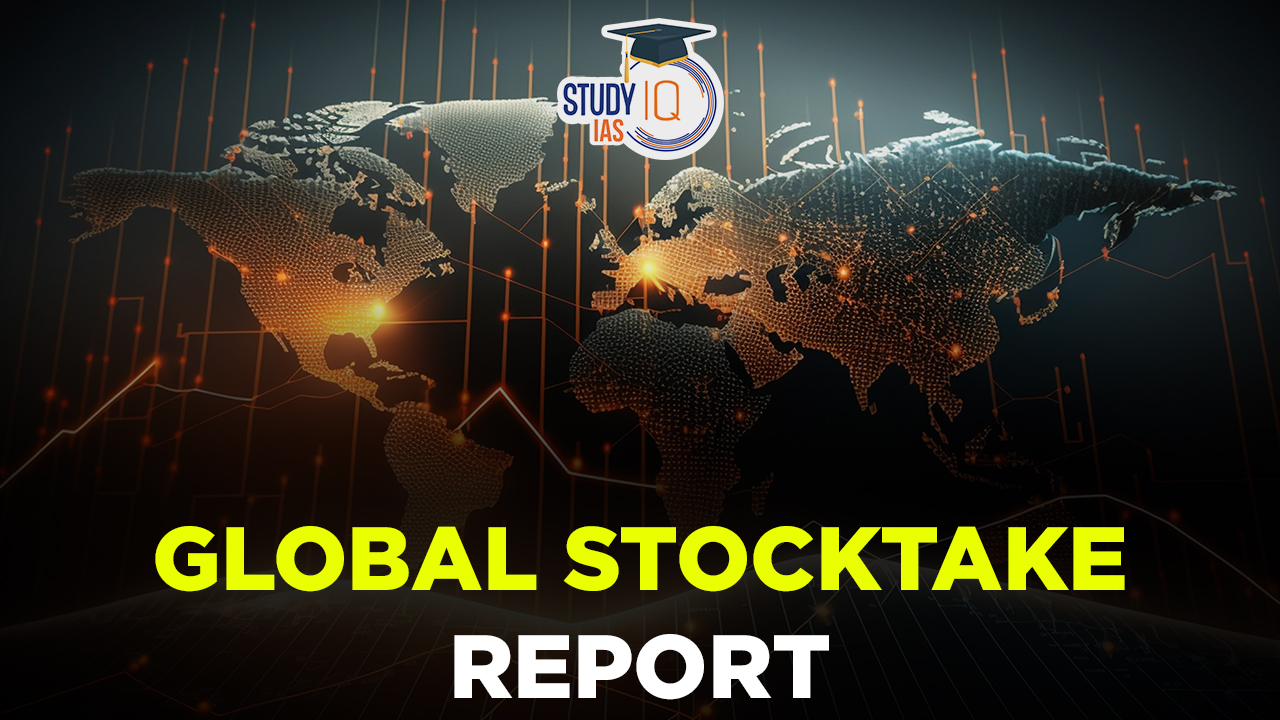Table of Contents
Context: The first official climate change report card, Global Stocktake, has revealed that the world is not on track to meet its long-term goals.
What is Global Stocktake?
- The Global Stocktake is a crucial component of the Paris Agreement.
- It is a process designed to assess and evaluate progress made by countries in achieving the goals of the Paris Agreement.
- It is conducted periodically, typically every five years.
- It looks at various aspects of climate action, including emissions reductions, adaptation measures, and financial support for developing countries.
- The Global Stocktake provides an opportunity for countries to identify gaps and areas where additional efforts are needed to meet the Paris Agreement’s goals.
About the Paris Agreement
- The Paris Agreement is a legally binding international treaty on climate change. It was adopted by 196 Parties at the UNFCCC’s COP21 in Paris in 2015.
- It aims to address climate change by limiting global warming to well below 2 degrees Celsius above pre-industrial levels, with an ambition to limit it to 1.5 degrees Celsius.
- It works on a five- year cycle of increasingly ambitious climate action carried out by countries.
- Every five years, each country is expected to submit an updated national climate action plan – known as Nationally Determined Contribution, or NDC.
Key Findings of the First Global Stocktake Report
A) Context
- Universal Climate Action: The Paris Agreement has driven widespread climate action by setting goals and signaling the urgency of addressing the climate crisis, but much more action is needed.
- Transformation for Resilience: To combat climate change and poverty, governments should support systems transformations for climate resilience and low emissions, with accountable actions from non-Party stakeholders.
- Emphasis on equity and inclusion: While systems transformations offer opportunities, rapid change can be disruptive. A focus on inclusion and equity can increase ambition in climate action and support.
B) Mitigation, Including Response Measures
- Emissions Misalignment: Global emissions don’t align with the Paris Agreement’s temperature goals. There’s a limited time to raise ambition and fulfill commitments to limit warming to 1.5°C.
- Ambitious Mitigation: More ambition is needed in domestic mitigation efforts and setting targets to cut global emissions by 43% by 2030 and 60% by 2035, reaching net-zero CO2 emissions by 2050.
- Sectoral Transformations: Achieving net-zero emissions requires transformations across sectors, including scaling up renewables, phasing out unabated fossil fuels, ending deforestation, and addressing non-CO2 emissions.
- Just Transition: just transitions can support more robust and equitable mitigation outcomes, with tailored approaches addressing different contexts.
- Just transition aims at ensuring that the low-carbon transition is fair, equitable, and inclusive for all stakeholders, particularly those most affected by the transition.
- Economic Diversification: Economic diversification is one of the strategies to address negative impacts of response measures and promote positive synergies.
- Opportunities for such diversification include green industrialization, the greening of supply chains and diversifying to related and unrelated products.
C) Adaptation, Including Loss and Damage
- Urgent Adaptation: Increased adaptation action and efforts to avert, minimize, and address loss and damage are urgently needed, especially for vulnerable communities.
- Climate adaptation refers to the process of adjusting and responding to the impacts and challenges of climate change in order to reduce vulnerability and enhance resilience.
- Fragmented Adaptation: Despite the increasing levels of adaptation, most observed adaptation efforts are fragmented, incremental, sector-specific and unequally distributed across regions.
- Local Context Matters: Locally-informed adaptation is more effective and can promote transformational adaptation.
- Loss and Damage Action: Urgent action is required across policies to manage risks comprehensively and support affected communities.
- Adaptation and funding for loss and damage must rapidly expand from innovative sources, aligning financial flows with climate-resilient development.
D) Means of Implementation and Support and Finance Flows
- International Finance: Mobilizing support for climate action in developing countries requires effective use of international public finance.
- Financial Flows Alignment: Aligning financial flows with low emissions and resilience involves unlocking trillions of dollars for climate action.
- Technology Deployment: Rapid deployment of cleaner technologies, along with innovation and technology transfer, is crucial for developing countries.
- Capacity-Building: Effective country-led and needs-based cooperation is essential for building and retaining capacities for sustained climate action at all levels.


 Daily Quiz 01 July 2025
Daily Quiz 01 July 2025
 China, Pakistan and Bangladesh Trilatera...
China, Pakistan and Bangladesh Trilatera...
 US Pulls Funding from GAVI-Global Vaccin...
US Pulls Funding from GAVI-Global Vaccin...





















